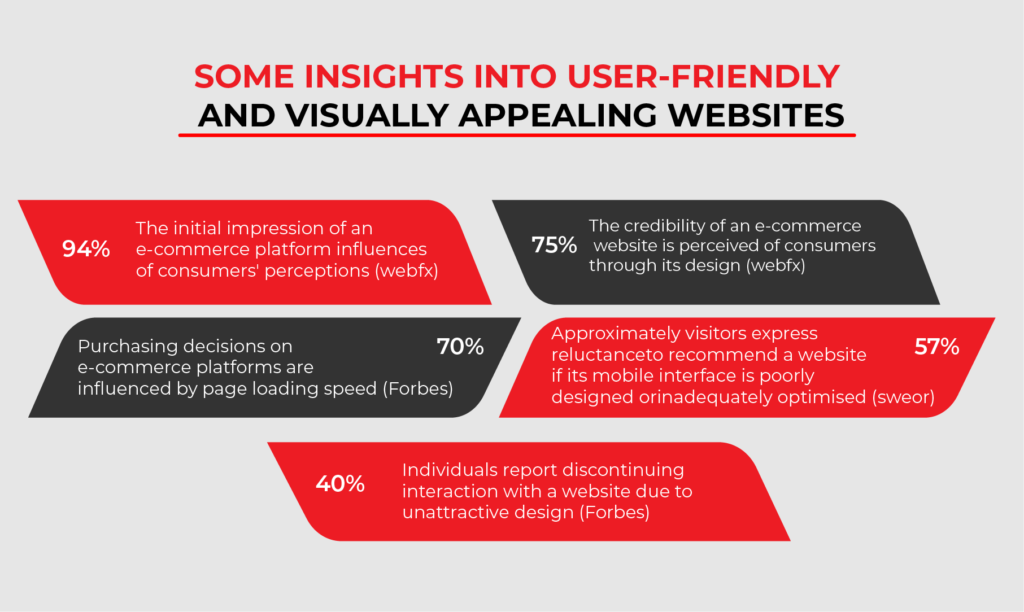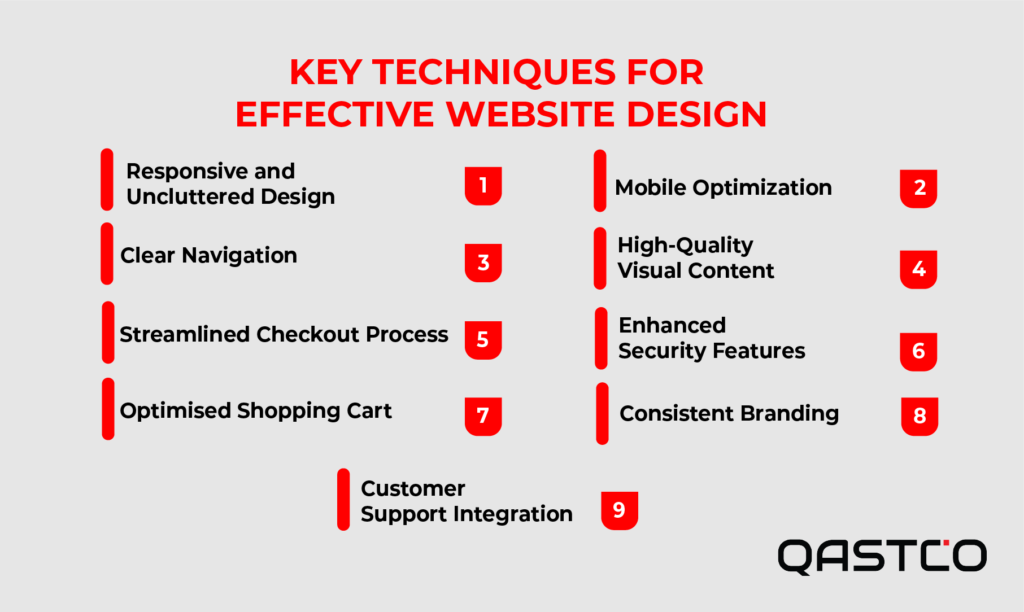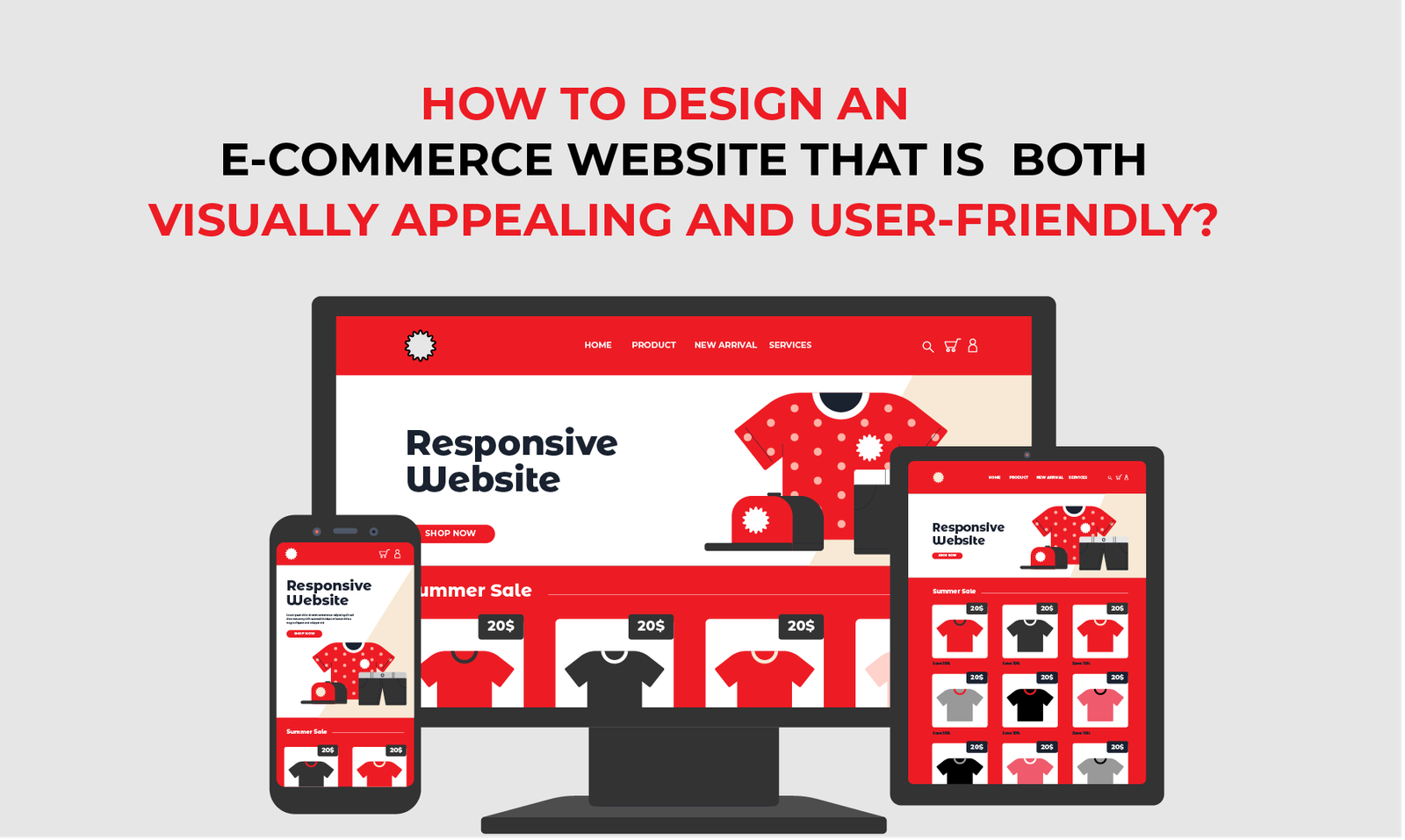E-commerce would never survive without web development as a critical component in its existence. Whether in the field of WordPress website design or some other one, the design of your e-commerce website should be visually appealing and user friendly. These features of websites not only ensure better conversions but also gain credibility and authenticity in the minds of target customers.
Get a customised e-commerce website to sell your customer-centric products or services digitally and
process payments securely.
Some Insights into User-Friendly and Visually Appealing Websites:
Data shows that attractive online stores (evident of professional website design) and user-friendly sites (easily navigating content and fast loading time) are great catalysts for high sales and high percentage of repeat customers. Consider the following statistics:
- Generally websites with poor user-friendly designs and poorly optimised are not recommended by 57% of visitors, as per sweepr.
- Around 40% of people leave the website even without having any kind of interaction with it because of its unattractive or confusing desings. (Forbes).
- The initial first impression of an e-commerce platform is vital as more than 94 % of consumers care about such a first impression (webfx).
- The 70% purchasing decision on an e-commerce website is influenced by page loading speed. (Forbes).
- Credibility of e-commerce websites is perceived by 75% of customers through its design structure and friendly navigation interface. (webfx).

Techniques for Designing a Visually Appealing and User-Friendly E-commerce Website
EA good E-commerce website integrates visually appealing aesthetics and user-friendly design. For this, businesses employ different techniques and factors to ensure the stunning appearance and memorable customer experience.

Importance of Visual Appeal and User-Friendliness in Website Design
Starbucks is a good choice as a relevant example. The essence of the brand of the company doesn’t just lie in the mere selling of coffee. As It becomes something more (an experience). They have been working on the interior design to enhance visual appeal. This improvement in visual appeal provide pleasing experience for consumers.
Also similarly, the e-commerce website of your business should pay special attention to the provision of an exclusive user experience. Visiting and ordering products should be very easy, with streamlined payment, authentication and checkout process.
Key Techniques for Effective Website Design
Responsive and Uncluttered Design:
Optimise your page design for quick load times and flawless user experience, irrespective of the device they are using. Much like you would in a brick and mortar store, too many things and make sure to put your prime articles on display. Responsive layout is compulsory to make sure that the website is accessible across multiple platforms such as desktops and cellphones.
Clear Navigation:
Clear navigation of the site is very important. Since 65% of users say that they consider it a crucial element of prolonged sessions. Categorise products logically, ensure easy navigation between pages and write easy-to-understand features of the product for better customer experience on your site.
Mobile Optimization:
Considering nowadays nearly 60% of e-commerce traffic takes place through mobile devices, the fact remains that a successful website is highly mobile friendly. In this way, the mobile design of your website should provide smooth navigation, evident interface elements, and a user-friendly experience on all mobile devices.
High-Quality Visual Content:
The presence of the high-quality images and video in the marketing has a tremendous effect on customers that arouse interest in the products. Shoppers make buying choices easily with high-quality images from various angles readily available for viewing and evaluation.
Streamlined Checkout Process:
Create a user-friendly checkout process by keeping it short and interactive. Give an alternative to registering as a guest. Make the form filling process easy to follow and provide a detailed summary of the cart. Include secure multiple payment ways as an option to match different preferences of potential customers.
Enhanced Security Features:
Implement strict and reliable security measures in order to ensure customers data protection. Publish texts that will let users understand their personal data security and offer terms, cookies and privacy policy consent to be taken.
Optimised Shopping Cart:
E-commerce websites must pay serious attention to provide optimal cart experience to the customers. This can be done by providing customers various options such as custom filters to compare different items, possible alternatives available and friendly interface for the checkout process.
Consistent Branding:
It is imperative to ensure branding remains consistent on the website. This helps online businesses to enhance the website’s visual appeal and make the site more credible for customers to shop. An easy way of maintaining consistent branding is to check out consistency in colour, fonts, logos, language, and imagery that can reinforce the brand identity.
Customer Support Integration:
Integrate customer’s frequent queries and your responsive customer support options to provide better customer experience and resolve conflict quickly. Furthermore, Active live chat support, sending of emails and phone calls are part of the overall customer satisfaction.
In Conclusion:
A classical and user-friendly e-commerce website must contain user friendly design elements to ensure aesthetic experience. In addition to that, the focus on mobile optimization, consistent branding, simplified checkout processes, intuitive navigation, and secure design can create an engaging and trustworthy E-commerce platform which can act as a catalyst to profitable sales conversions.


Leave a Reply
You must be logged in to post a comment.